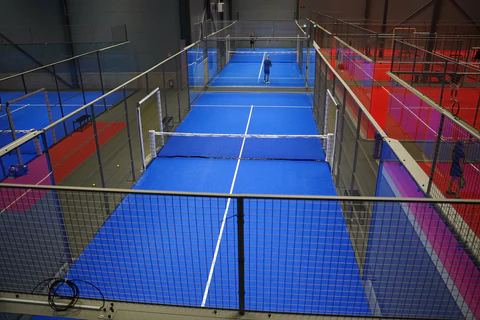

The Growing Popularity of Racquetball and Squash Courts
In recent years, racquetball and squash have steadily gained popularity as not only recreational activities but also as competitive sports. As urban spaces become more congested and lifestyles become busier, the demand for sports that provide both fitness and fun has surged. Racquetball and squash courts are at the forefront of this trend, offering a unique environment that promotes health, social interaction, and an engaging way to relieve stress.
Brief Overview of the Sports
Racquetball, invented in the 1950s in the United States, is typically played in an indoor court measuring 20 feet wide, 40 feet long, and 20 feet high. The game can be played in singles or doubles formats, and the objective is to hit a small rubber ball against the front wall, making it difficult for the opponent to return. The sport is known for its fast pace and intense rallies, which help players improve their cardiovascular fitness and agility.
On the other hand, squash, which has its origins in the game of racquets from the 19th century, is played in a smaller court, usually measuring 21 feet wide and 32 feet long. Similar to racquetball, squash can also be played in singles or doubles. However, the ball used in squash is slightly smaller and does not bounce as high, necessitating a different style of play that focuses on quick reflexes and strategic shot placement.
Health Benefits
Both racquetball and squash are excellent workouts that improve physical fitness, coordination, and mental acuity. Players engage in high-intensity bursts of activity that elevate heart rates, making these sports excellent for cardiovascular health. Additionally, the continuous movement involved in chasing and returning the ball enhances endurance and strength, particularly in the legs and core.
Participation in these sports has been linked to numerous health benefits, including weight management, improved flexibility, and heightened reflexes. Playing racquetball or squash helps burn a substantial number of calories—often as many as 600 to 800 calories in just an hour, depending on the intensity. Moreover, the social aspect of the game, whether playing with friends or meeting new people at the courts, promotes mental wellness, further reducing stress and anxiety.

Court Accessibility
One of the significant factors contributing to the rise of racquetball and squash is the increasing accessibility of specialized courts. Many fitness centers, community gyms, and sports clubs are adding racquetball and squash facilities to their offerings. This trend not only provides more opportunities for players to engage in these sports but also encourages novices to try something new.
Furthermore, the construction of dedicated racquetball and squash complexes around the world has made it easier for enthusiasts to find suitable venues. Investing in high-quality courts and maintaining competitive standards help attract players of all levels, from beginners to seasoned professionals.
Community Engagement and Tournaments
Community engagement has become a crucial element in promoting racquetball and squash. Local leagues, tournaments, and events foster an inclusive environment for players to connect while competing. Many clubs host regular workshops, clinics, and training sessions, helping newcomers learn the basics of the game. These events are not only beneficial for skill development but also contribute to forming lasting friendships and encouraging a sense of belonging within the community.
Tournaments ranging from local competitions to national championships provide dynamic platforms for players to showcase their talents and dedication. They also inspire younger generations to get involved in the sport, ensuring its growth and sustainability.
Conclusion
Racquetball and squash are more than just sports; they offer numerous health benefits and foster community spirit. As the popularity of these activities continues to rise, the need for more dedicated courts and facilities becomes increasingly clear. With growing accessibility, organized competitions, and a supportive community, racquetball and squash courts are paving the way for a healthier, more socially connected future. Whether you're looking to stay fit, meet new friends, or challenge yourself competitively, diving into the world of racquetball and squash might be the perfect option for you. So grab a racquet, find a court, and join the fun—your body and mind will thank you!
AI-Designed Paddle Racquet | GPT-4 Turbo Tech
Premium Paddle Racquet | AI-Optimized Design
Smart Padel Courts with GPT-4 Turbo AI
AI-Powered Paddle Racquet w/ GPT-4-Turbo Optimized
China Pro Ping Pong Paddle | Premium Spin Control
Premium AI-Enhanced Padel Court | GPT-4 Turbo Design